A Surface Interpolating Method for 3D Curves-Nets
Ling Huang JianFeng Zhen Xinxiong Zhu Leiyi
(School of Mechanical Engineering & Automation,
Beijing University of Aeronautics &
Astronautics, Beijing, 100083)
Abstract: This paper
presents an algorithm for surface interpolating on 3D curve-nets based on NURBS
boundary Gregory (NBG) patches. By applying this algorithm complicated surfaces
can be generated with curve lofting and sweeping. Based on them a set of
surface generating tools have been developed and applied in the commercial CAD/CAE/CAM
software system – CAXA-ME and greatly enriched its surface generating
capability.
1. Introduction
Constructing mesh surfaces from 3D curve-nets is a widely used modeling tool in commercial CAD/CAM systems which make the design of complex free-form surfaces easily and intuitively. Curves in a curve-net should be smooth enough and intersect with each other to form a mesh as shown in Fig.1. The curve-net may have a rectangular topology as shown in Fig.1 (a) and (b) or an irregular topology as shown in Fig.1(c).
F1



(a) Regular rectangular
topology (b) Irregular rectangular topology (c) Irregular
topology
Fig.1. Three types of curve-nets
This memorandum discusses
the interpolation of curve-nets with rectangular topology. In our method
free-form surface patches over the curve-nets are generated based on localized
boundary information and all the adjacent patches are joined together with ![]() continuity. Fig.1 (b) illustrates that
patch F1 is generated from the region defined by edges E1, E2, E3 and E4. The surface
interpolating method presented generates surfaces with
continuity. Fig.1 (b) illustrates that
patch F1 is generated from the region defined by edges E1, E2, E3 and E4. The surface
interpolating method presented generates surfaces with ![]() continuity and
is based on NURBS boundary Gregory (NBG)patches.
continuity and
is based on NURBS boundary Gregory (NBG)patches.
2. Strategy
2.1 Procedure
This section describes the main steps of constructing surfaces from 3D curve-nets:
l Step1: Split the curves and transform them to a series of Bezier curve segments suitable for NBG patches interpolation.
l Step2: Define the cross boundary derivatives of curves.
l Step3: Construct NBG patches on every rectangular region.
l Step4: Compose all the NBG patches to a composite surface if needed.
2.2 NURBS Boundary Gregory (NBG)
Patch
A NURBS Boundary Gregory patch is an extension of a general boundary Coons
Patch. NBG patch solved the problem of the twist compatibility at patch corners
by taking advantages of Gregory patch![]() . Fig.2 illustrates the concept of the NBG patch. An NBG
patch
. Fig.2 illustrates the concept of the NBG patch. An NBG
patch ![]() is represented
by a combination of three surfaces and defined by Equation (1):
is represented
by a combination of three surfaces and defined by Equation (1):
![]() (1)
(1)
![]() is a surface
interpolating two NURBS curves
is a surface
interpolating two NURBS curves ![]() and
and ![]() , and the cross boundary derivatives
, and the cross boundary derivatives ![]() and
and ![]() .
. ![]() and
and ![]() are represented
in NURBS form as follows:
are represented
in NURBS form as follows:
 ,
,  (2)
(2)
where both of ![]() and
and ![]() have
have ![]() control points;
control points; ![]() denotes the
degree of the curves;
denotes the
degree of the curves; ![]() and
and ![]() (
(![]() ) denotes the control points and
) denotes the control points and ![]() and
and ![]() denotes the
weights of
denotes the
weights of ![]() and
and ![]() , respectively;
, respectively; ![]() is the j-th B-spline
basis function of degree
is the j-th B-spline
basis function of degree ![]() defined by knot
vector
defined by knot
vector ![]() as follows:
as follows:
![]()
 (3)
(3)
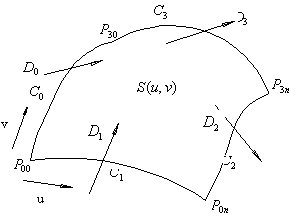
Fig.2. Concept of an NBG patch
Since the cross boundary derivatives ![]() and
and ![]() can be
represented in NURBS form,
can be
represented in NURBS form, ![]() should be a
NURBS surface defined by Equation (4):
should be a
NURBS surface defined by Equation (4):
 (4)
(4)
where ![]() is the i-th B-spline
basis function of degree 3 defined by the knot vector in the
is the i-th B-spline
basis function of degree 3 defined by the knot vector in the ![]() -direction which is described by
-direction which is described by ![]() . A knot vector in the
. A knot vector in the ![]() -direction is defined by Equation (3).
-direction is defined by Equation (3). ![]() has a similar
representation. To simplify our discussion, we assume that the degree of the
boundary curves is 3 (
has a similar
representation. To simplify our discussion, we assume that the degree of the
boundary curves is 3 (![]() ).
).
![]() is an additional
surface. The relationships between
is an additional
surface. The relationships between ![]() and
and ![]() , and
, and ![]() and
and ![]() are shown by
Equation set (5):
are shown by
Equation set (5):
![]()
![]()
![]()
![]() (5)
(5)
Where ![]() .
.
![]() can be
represented by bicubic rational boundary Gregory patches (Equation (6) and (7))
can be
represented by bicubic rational boundary Gregory patches (Equation (6) and (7))![]() :
:
 (6)
(6)
where 
![]() (7)
(7)
where  ,
,![]()
![]() denotes control points and
denotes control points and ![]() denotes the
weights of the corresponding control points
denotes the
weights of the corresponding control points ![]() . By applying
Equations (5), we can get the 32
control points and their weights defining
. By applying
Equations (5), we can get the 32
control points and their weights defining ![]()
![]() 。
。
The features of an NBG patch are:
l The
cross boundary derivatives in u- and v- directions can be defined independently. By applying this feature, an irregular
mesh can be interpolated smoothly.
l The shape of an NBG patch can be modified by
adjusting the defining control points as NURBS patch does.
l An NBG patch can be exactly converted to a NURBS surface.
2.3 Preparations of Curve-Nets
Before constructing a surface interpolating the given curve-nets (See Fig.3), we should deal with the curves as follows:
l Split
each curve at intersection points to get all the rectangular regions. We call the intersection points Corner Points.
l
Transform
every curve to a series of Bezier curve segments by applying the knot inserting
algorithm of NURBS![]() . We call the joining point between two Bezier segments Node.
. We call the joining point between two Bezier segments Node.
2.4 Definitions of Cross Boundary Derivatives(CBDs)
The CBDs have crucial effect on the shape of the result patches, i.e., they can make the patches effectively reflect the shape of the given curves.
2.4.1 Normal Vector
The normal vector ![]() at the corner
point should be perpendicular to the tangent vectors
at the corner
point should be perpendicular to the tangent vectors ![]() and
and ![]() at the
corresponding corner point, as shown in Fig.4.
at the
corresponding corner point, as shown in Fig.4.
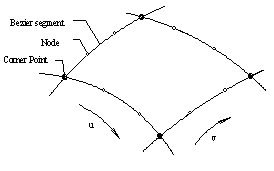
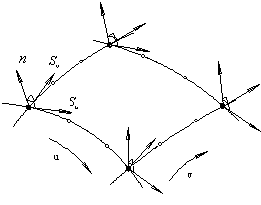
Fig.3. Corner point and node Fig.4. The normal vectors at corner points
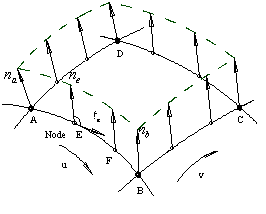
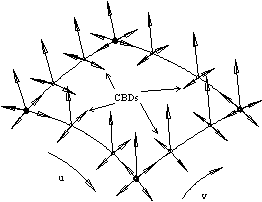
Fig.5. The normal vectors on boundaries Fig.6. The
cross-boundary derivatives
Now calculate the normal vectors at nodes. As show in Fig.5, E is a node
between corner points A and B. We can determine the normal vector ![]() at node E by
taking a linear blending of the normal vectors
at node E by
taking a linear blending of the normal vectors ![]() and
and ![]() at corner points A and B.
at corner points A and B. ![]() is perpendicular to tangent vector
is perpendicular to tangent vector ![]() at node E of the curve and can be
calculated by Equation (8):
at node E of the curve and can be
calculated by Equation (8):

where ![]() (8)
(8)
Where ![]() is the dot
product of two vectors.
is the dot
product of two vectors.
2.4.2 Cross Boundary Derivatives
The cross boundary derivatives at corner points and nodes should be perpendicular
to the corresponding normal vectors as shown in Fig.6. The length of those
vectors is determined by taking advantages of one third of the distance between
two adjacent curves.
As shown in Fig.7, the shape of
patches ![]() and
and ![]() with common
boundary
with common
boundary ![]() is controlled by
boundaries
is controlled by
boundaries ![]() ,
,![]() ,
,![]() ,
,![]() and
and ![]() . So the cross boundary derivative
. So the cross boundary derivative ![]() of patch
of patch ![]() on boundary
on boundary ![]() should be
determined by boundaries
should be
determined by boundaries ![]() ,
, ![]() and
and ![]() to reflect the
shape change of the adjacent boundaries
to reflect the
shape change of the adjacent boundaries ![]() and
and ![]() . Similarly, the cross boundary derivative
. Similarly, the cross boundary derivative ![]() of patch
of patch ![]() on boundary
on boundary ![]() should be
determined by boundaries
should be
determined by boundaries ![]() ,
, ![]() and
and ![]() .
. ![]() and
and ![]() are joined with
are joined with ![]() continuity at
continuity at ![]() ;
; ![]() and
and ![]() are joined with
are joined with ![]() continuity at
continuity at ![]() . So
. So ![]() and
and ![]() can be joined with
can be joined with ![]() continuity on boundary
continuity on boundary ![]() if
if ![]() ,where
,where ![]() is a variable changing along
is a variable changing along ![]() . By applying the
same strategy we can determine cross boundary derivatives
. By applying the
same strategy we can determine cross boundary derivatives ![]() ,
, ![]() and
and ![]() .
.
![]()
![]()
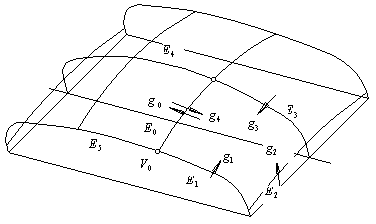
Fig.7. Determining CBDs of curve mesh
2.5 Constructions of NBG Patch on Rectangular Region
As show in Fig.8, after defining
the cross-boundary derivatives, the control points both sides next to those on
common boundary ![]() and
and ![]() and
and ![]() and
and ![]() can be
calculated.
can be
calculated.
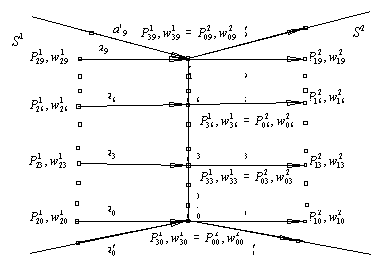
Fig.8. Joining two NBG patches
Now calculate the inner control points of patches ![]() ,
, ![]() and
and ![]() . Two NBG patches will join together with
. Two NBG patches will join together with ![]() continuity along
common boundary if they join together with
continuity along
common boundary if they join together with ![]() continuity on
every Bezier segment of the boundaries. So we can join two patches smoothly and
determine the inner control points and their weights of patches
continuity on
every Bezier segment of the boundaries. So we can join two patches smoothly and
determine the inner control points and their weights of patches ![]() and
and ![]() by applying the
algorithm of joining rational boundary Gregory patches
by applying the
algorithm of joining rational boundary Gregory patches![]() , as shown in Fig.8. By applying Equation (5), the
control points and weights of
, as shown in Fig.8. By applying Equation (5), the
control points and weights of ![]() can be
determined
can be
determined![]() 。
。
A
number of NBG patches defined on the rectangular regions of the
curve-nets can be constructed and all the adjacent patches can be joined
together with ![]() continuity by the use of the procedure
presented. All the patches can be composed into a composite surface if needed.
continuity by the use of the procedure
presented. All the patches can be composed into a composite surface if needed.
3. Concluding remarks
The algorithm has the following
advantage:
l The shape of the result surfaces can be controlled
and modified easily because only local information is referenced.
l NURBS
Boundary Gregory Patch solves the problem
of twist vectors incompatibility at corner points in the super-linear interpolation
of mesh surface and ensures the smoothness of every patch and ![]() continuity
between adjacent patches.
continuity
between adjacent patches.
l The shape of result surface can effectively
reflect the shape of the curves in a net by the method determining CBDs.
l The amount of data to represent the mesh surfaces
is less than that of NURBS surfaces.
As shown in Fig.9, Fig.10 and Fig.11, the algorithm has been used to a number of cases in curve-nets interpolation. The algorithm has been realized by ourselves with C and C++, and has been incorporated into our commercial CAD/CAE/CAM software system —CAXA-ME.
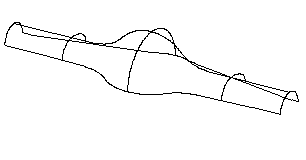
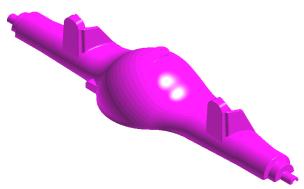
(a) Curve-nets
given
(b) Mesh surface generated
Fig.9. Rear axle surface generation
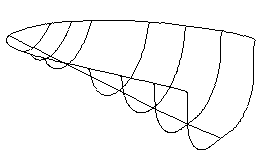
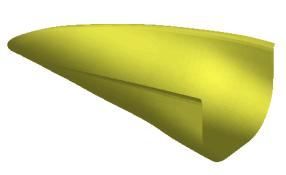
(a) Curve-nets given
(b) Mesh surface generated
Fig.10. Aerodynamic Fairing surface
generation
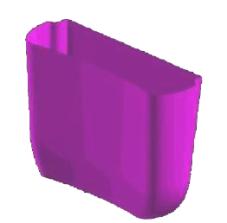
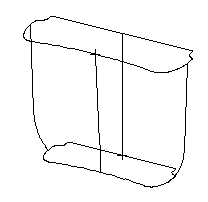
(a) Curve-net given
(b) Mesh surface generated
Fig.10. Water tank surface
generation
References
[1] Konno K. And Chiyokura H., A approach of designing and controlling free-form surfaces by using NURBS boundary Gregory patches, Computer aided geometric design, Vol.13, 1996, pp.825-849.
[2] Gregory J.A., Smooth interpolation without twist constrains, Computer Aided Geometric Design, Academic-Press, 1974, pp.27-33.
[3]
Chiyokura H., Takamura T., Konno K., Harada T., ![]() surface interpolation
over irregular meshes with rational curves. In: Farin G., ed., NURBS for curves
and surfaces design, SIAM, Philadelphia PA, 1991, pp.15-34.
surface interpolation
over irregular meshes with rational curves. In: Farin G., ed., NURBS for curves
and surfaces design, SIAM, Philadelphia PA, 1991, pp.15-34.
[4] Piegl,L. and Tiller,W., The NURBS Book, Springer, 1995.
[5] Toriya H. And Chiyokura H., eds., 3D CAD Principles and Application, Springer, 1993.